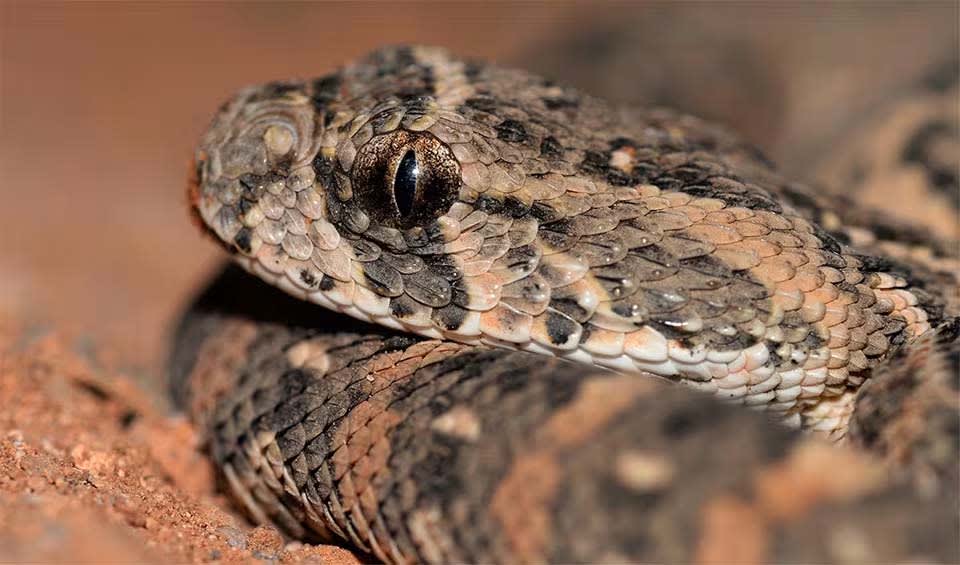This snake is renowned for its potent venom and striking defensive behavior. It gets its name from its unique defense mechanism; when threatened, it inflates its body and hisses loudly, making a puffing sound to deter predators. This aggressive display is often enough to warn off potential threats, but if provoked further, the puff adder can deliver a deadly bite.
Puff adders are widespread across the African continent, inhabiting a variety of environments from savannas and grasslands to forests and rocky areas. Their adaptability to different habitats makes them one of the most common and widespread snakes in Africa. These snakes are typically stout-bodied and can grow up to about 1 meter (3 ft) in length, although some individuals can reach up to 2 meters (6 ft). They have a distinctive appearance with a thick, muscular body, keeled scales, and a broad, triangular head. Their coloration varies depending on their environment, often featuring a pattern of dark and light bands that provide excellent camouflage against the leaf litter and underbrush.
One of the most remarkable aspects of the puff adder is its hunting technique. Puff adders are ambush predators, unlike many snakes that actively pursue their prey. They rely on their camouflage to remain hidden while waiting for unsuspecting prey to come within striking distance. Once a target, such as a rodent, bird, or small mammal, is close enough, the puff adder strikes incredibly quickly. Its long fangs inject a potent venom that immobilizes the prey almost instantly. The venom is a complex cocktail of enzymes and toxins that can cause severe pain, swelling, and tissue damage in humans, and it can be fatal without prompt medical treatment.
Distribution
 Angola
Angola Benin
Benin Botswana
Botswana Burkina Faso
Burkina Faso Burundi
Burundi Cameroon
Cameroon Central Af. Rep.
Central Af. Rep. Chad
Chad Congo-Brazzaville
Congo-Brazzaville Côte D’ivoire
Côte D’ivoire DR Congo (Kinshasa)
DR Congo (Kinshasa) Djibouti
Djibouti Eritrea
Eritrea Eswatini
Eswatini Ethiopia
Ethiopia Gabon
Gabon Gambia
Gambia Ghana
Ghana Guinea-Bissau
Guinea-Bissau Guinea
Guinea Kenya
Kenya Lesotho
Lesotho Malawi
Malawi Mali
Mali Mauritania
Mauritania Morocco
Morocco Mozambique
Mozambique Namibia
Namibia Niger
Niger Nigeria
Nigeria Oman
Oman Rwanda
Rwanda Saudi Arabia
Saudi Arabia Senegal
Senegal Sierra Leone
Sierra Leone Somalia
Somalia South Africa
South Africa Tanzania
Tanzania Togo
Togo Uganda
Uganda Yemen
Yemen Zambia
Zambia Zimbabwe
ZimbabweAnything we've missed?
Help us improve this page by suggesting edits. Glory never dies!
Suggest an editGet to know me
Terrestrial / Aquatic
Altricial / Precocial
Polygamous / Monogamous
Dimorphic (size) / Monomorphic
Active: Diurnal / Nocturnal
Social behavior: Solitary / Pack / Herd
Diet: Carnivore / Herbivore / Omnivore / Piscivorous / Insectivore
Migratory: Yes / No
Domesticated: Yes / No
Dangerous: Yes / No




